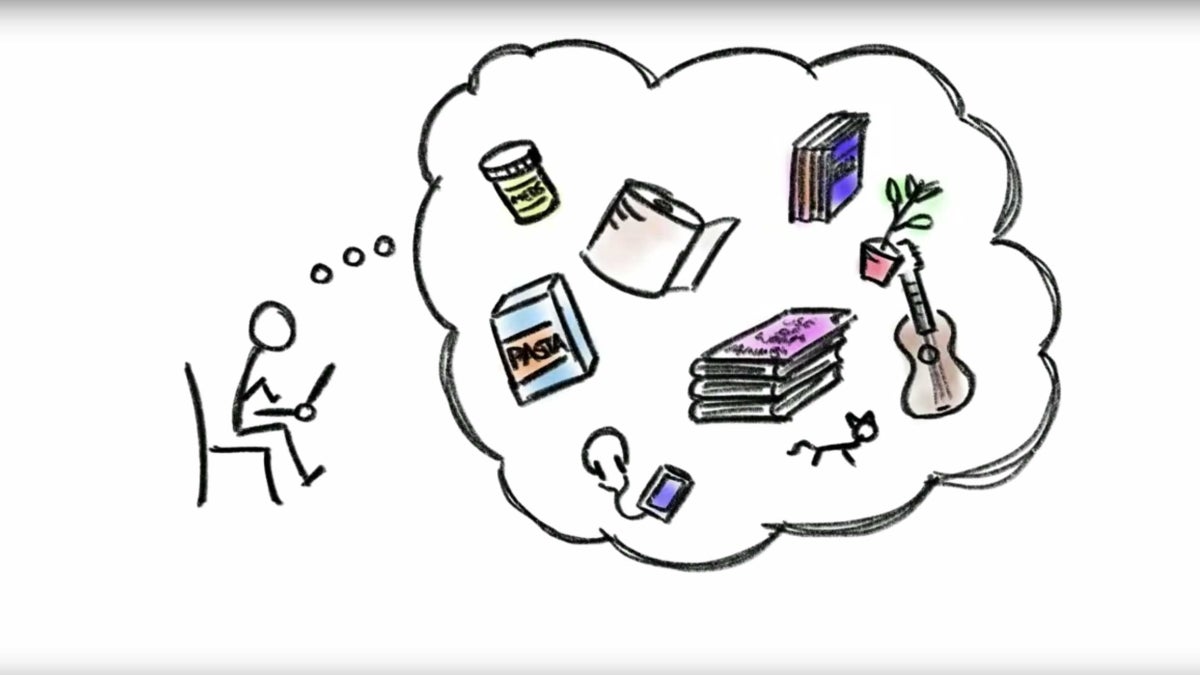In one month, Arizona State University researcher Michael Bernstein went from a trip spanning the globe from Norway and Denmark to the Netherlands, Germany, and Japan to self-imposed quarantine in his one-bedroom apartment in downtown Phoenix.
It isn’t terrible — his apartment faces west, into an inner courtyard where the sunlight filters through a palm tree in the late afternoon sun — but still a far cry from spring in Tokyo, admiring cherry blossoms and snacking on yakitori.
As of this story's publication (April 2), he has three days left staring at the light streaming through that palm tree. He knew he was going in the hole back home when he was in Europe. Or, as he put it: “the definitive prospect of having to be in self-quarantine per ASU policy and civic duty when returning from the Netherlands.”
While staying with a friend in the Netherlands, Bernstein began reading about the pandemic, mitigation measures, the effects of quarantines and a range of other topics.
“I thought it would be helpful to condense and distill all of the information into something that also invited me to mentally prepare myself,” said Bernstein, an assistant research professor in School for the Future of Innovation in Society.
Bernstein contacted his colleague Andrew Maynard, a professor, scientist, risk expert and author who produces a series of videos covering everything from human health risks and risk perception, to the risks and benefits of emerging and future technologies. The series is called Risk Bites.
They put together a five-minute video titled “A Guide to Self Care While Social Distancing.”
ASU Now talked to Bernstein about life without human contact, what happens when you can’t tango, and the importance of humor.
Question: What really got on your nerves during self-quarantine? What gave the most relief? Anything you’d change or prepare differently if you had to do it again?
Answer: As I write this, I’m at the end of day 6 of self-quarantine (March 27), so the past tense is a bit incomplete to use for me yet, but I’ll share what I’ve felt so far.
The first day was the hardest, in large part because I went from an environment of living with my friend to being alone.
The second day, I suppose memories of my life in Phoenix three weeks before came up strongly, and I sorely missed human contact. As a tango dancer, I missed in particular the ability to dance in a room with people.
Immediately on the first day, however, I got tremendous relief from various friends. One, spontaneously and incredibly kindly, had offered to get groceries for me while I was still away. She dropped them off for me and added some extra treats like excellent homemade kombucha. Another, also spontaneously, shared two virtual events for me to explore as part of our new, physically distant reality — a livestreamed dance event, just to move, and a livestreamed Facebook concert. I was feeling a bit down, but pushing myself out of my comfort zone to try these new virtual media really helped spark joy and appreciation for how I could spend my time in self-quarantine.
To prepare differently, with hindsight, I’d say to keep a standing supply of Lysol wipes in the future. And apparently toilet paper — although I miraculously happened to already have enough when I returned home.
Q: I see a few of your suggestions pop up in similar advice here and there. Are there common things to do to stay sane?
A: I’m glad you see similar advice, as the content of the video is definitely a reflection of some of the early sources of advice shared! Yes, I think the main themes that I’ve been seeing have really revolved around: leaning into social connections — connecting with friends and family and colleagues; maintaining healthy eating, sleeping and activity habits, as well as mindful engagement with news; and adopting an appropriate mindset, adjusting expectations for the time ahead, appreciating the invitation to slow down, and being OK with uncertainty about what will happen next because we’re all in the same boat, so to speak.
Q: Finally: movie recommendations. "Papillon," "Count of Monte Cristo," "Castaway," "Contagion"?
A: Well, this is a good one to ask, and coincidentally, my friend and I were going back and forth on movies that bring joy in uncertain times. My initial list included some fun, light-hearted movies like the mocumentary "What We Do in the Shadows," or the brilliant Melissa McCarthy’s comedies like "The Heat" or "Spy"; Pixar’s "Inside Out"; Miyazaki’s "Spirited Away." But — well, why not — on the airplane home I watched "Frozen II" and think it definitely takes the cake for a time-appropriate movie recommendation. Not from a content perspective, but from a message perspective of how we have the opportunity to grow with and through uncertainty if we can embrace focus on doing the next right thing.
Top image: Illustration courtesy of the School for the Future of innovation in Society
More Science and technology

Lucy's lasting legacy: Donald Johanson reflects on the discovery of a lifetime
Fifty years ago, in the dusty hills of Hadar, Ethiopia, a young paleoanthropologist, Donald Johanson, discovered what would become one of the most famous fossil skeletons of our lifetime — the 3.2…

ASU and Deca Technologies selected to lead $100M SHIELD USA project to strengthen U.S. semiconductor packaging capabilities
The National Institute of Standards and Technology — part of the U.S. Department of Commerce — announced today that it plans to award as much as $100 million to Arizona State University and Deca…

From food crops to cancer clinics: Lessons in extermination resistance
Just as crop-devouring insects evolve to resist pesticides, cancer cells can increase their lethality by developing resistance to treatment. In fact, most deaths from cancer are caused by the…
